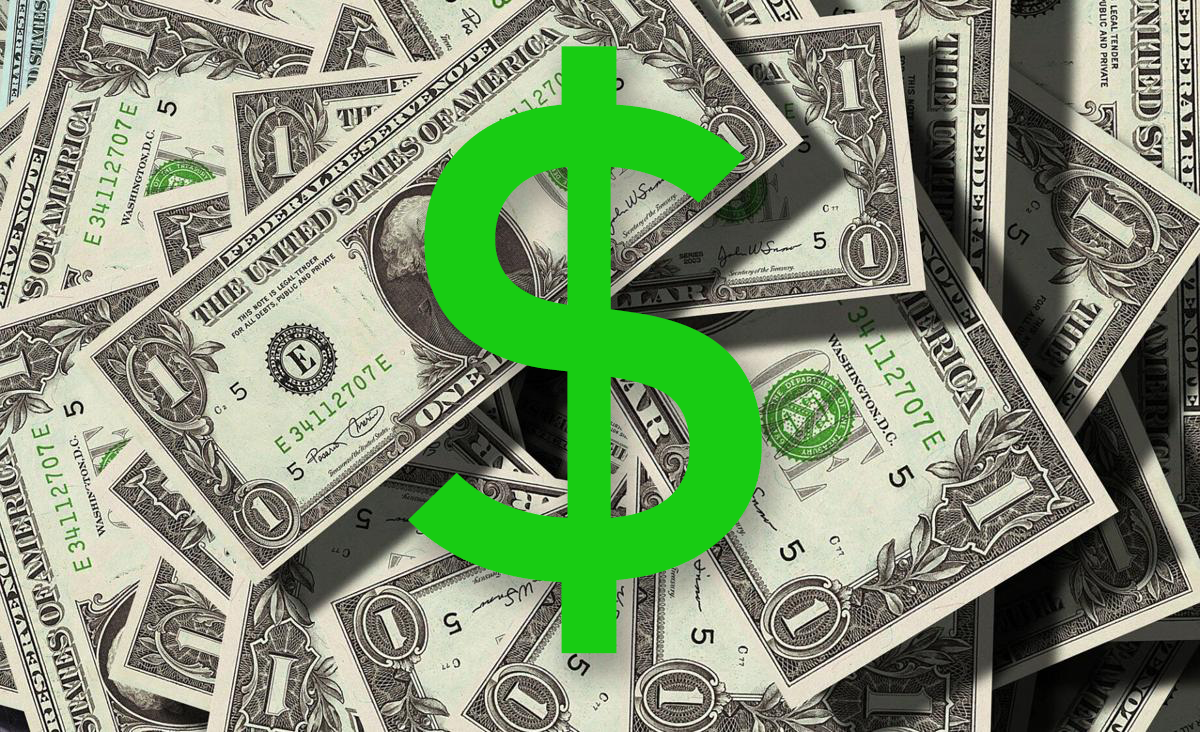
Cents makes sense. It’s a tiny c, for a word that starts with c, and originates from a Latin word centum that means exactly what it is: a hundredth of a dollar.
But where do we get the single or double-struck “S” to represent our Dollar? Why not D?
One theory suggests that the $ comes from the squishing together of U and S for United States, sort of like this:

But while that is indeed very patriotic, you may be surprised to learn that the United States currency is not American at all.
It’s a Spanish peso.
THE ORIGIN OF THE DOLLAR
It all began in the early 16th century in a Central European region known as Bohemia (modern day Czech Republic). While gold had been a popular currency of trade, the Bohemians had run across a local abundance of silver ore. This presented a perfect opportunity for them to mint a heavy silver coin. If it caught on, they could lay claim to great wealth.
Just as they had hoped, the joachimsthaler (named after the Joachimsthal of Bohemia) easily become a hit among European traders, especially since it was evenly divisible with the other currencies being used. Soon, everyone was making their own version of the joachimsthaler, which was shortened to thaler – or as the English later wrote it, the dollar.

Pesos Come Into Play
Meanwhile, by the 15th century, Spanish conquistadors and explorers were taking the world by storm. Unlike other regions, Spain kept their silver coins pure by mining for new supply, and, of course, melting down the wares of conquered nations. With this advantage, the Spanish began minting their own silver coin. It was named the real de a ocho, but was more commonly referred to as as pesos de ocho (or pieces of eight for those familiar with pirate flicks).

The peso, which was nicknamed the “Spanish dollar”, soon began to eclipse the thaler in popularity. And along with the conquistadors, it expanded throughout the Americas and Asia. In fact, today, nearly 1/3 of the world’s population uses a currency derived from this early Spanish coin.
It can be found in Spanish and Latin America nations as the peso, in Saudi Arabia as the riyal (from real), and in the US and Canada as the dollar. Even the Chinese yuan and the Japanese yen are translated as “round object” – so named after the round shape of the original Spanish coin.
$$$$$$$$
As merchants and tradesmen kept their ledgers by hand, they soon grew tired of writing the word peso again and again and shortened it to “P”, using a lowercase s to denote more plural.
Eventually, to make it even more distinct as a symbol, the merchants began to superimpose the S on top of the P.
By the late 18th century, lazy hands had decided to do away with the loop on the P entirely. It was the ideal stroke to drop, as it was mostly obscured by the top of the S. The symbol $ we all know and love was born.

Since pesos/dollars were the most abundant currency in the early United States, the Spanish dollar and its symbol were first adopted as a national mint standard in 1792. Meanwhile, $ still represents the peso in Latin America, probably leaving our Latinx counterparts asking themselves a similar question: “Why does our peso sign look like an S?”
The Double-Struck S
Despite the standard origin of the single-stroke $ sign, a double-struck symbol is also commonly written in the United States. As mentioned earlier, this might have been derived from superimposing the letters U and S for United States, then dropping the bottom arc of the U. Perhaps our patriotic ancestors just wanted a way to personalize our currency and make it seem more “All-American.”
